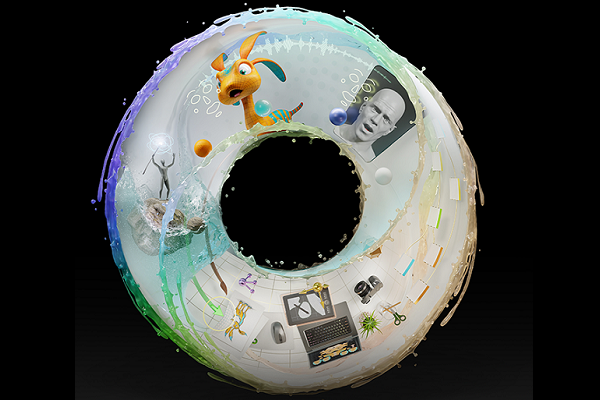Nvidia Unveils Free Omniverse Platform for Creators
Nvidia has launched a free version of its Omniverse platform, which connects interactive virtual worlds into a system called a metaverse. The free Omniverse is aimed at attracting artists and content creators to explore and build with Nvidia’s tools and on its servers without having to pay for the higher-end features and storage.
Free Omniverse
The Omniverse carries two decades of Nvidia technology fueled by hundreds of millions of dollars of investment. The year-long beta test saw almost 100,000 downloads from creators playing with its graphical and AI tools. The platform is built to encourage teamwork and simulation across a broad range of manufacturing and experiential products encompassing everything from building cars and buildings to editing a movie or designing a video game. The immersive 3D worlds of the metaverse are supposed to allow for experiments with physics as well as down-to-earth simulations of how designs would fare if brought into reality. Nvidia has plenty of plans to charge for access and use of Omniverse but wants to set up a free version of the platform to draw more users. The company compared it to an operating system whose cost is baked into a product, but that makes money from what people actually do while using it.
“Omniverse is a platform that doesn’t replace existing workflows. It brings them all together,” Nvidia Omniverse vice president Richard Kerris said. “We believe down the road there will be many avenues for commerce in these virtual worlds whether it is to be microservice selling, custom connectors or other things to enhance your workflow. There is an entire economy coming in these virtual worlds that’s much larger than what’s being done in the physical world.”
Future Face
One of the features included with the free Omniverse platform applies voice data to animate three-dimensional skin and muscles on a virtual face. The feature, appropriately called Audio2Face, is part of Nvidia Jarvis. Nvidia used Audio2Face to create an entirely virtual version of CEO Jensen Huang to handle a small piece of a major speech at its conference earlier this year. Meta’s metaverse announcement and virtual office debut, Baidu’s new XiRang metaverse and Nvidia’s Omniverse showcase mean the tech giants aren’t ignoring this either.
The metaverse has taken off over the last year and is poised for even more growth. The launch of MetaHuman Creator by Unreal February sparked a kind of arms race among voice and visual AI developers. Investors and clients are showering startups like Hour One, Supertone, Resemble AI, Veritone, and DeepBrain with cash and contracts. AI-powered versions of virtual humans have become an increasingly common sight worldwide. YouTube star Taryn Southern’s virtual clone, the story-telling virtual William Shatner, Nestle Toll House’s virtual “cookie coach” Ruth, and Sber’sRussian television host are just the leading edge. Recently, virtual human avatar generator Ready Player Me closed a $13 million funding round.
Follow @voicebotai Follow @erichschwartz









